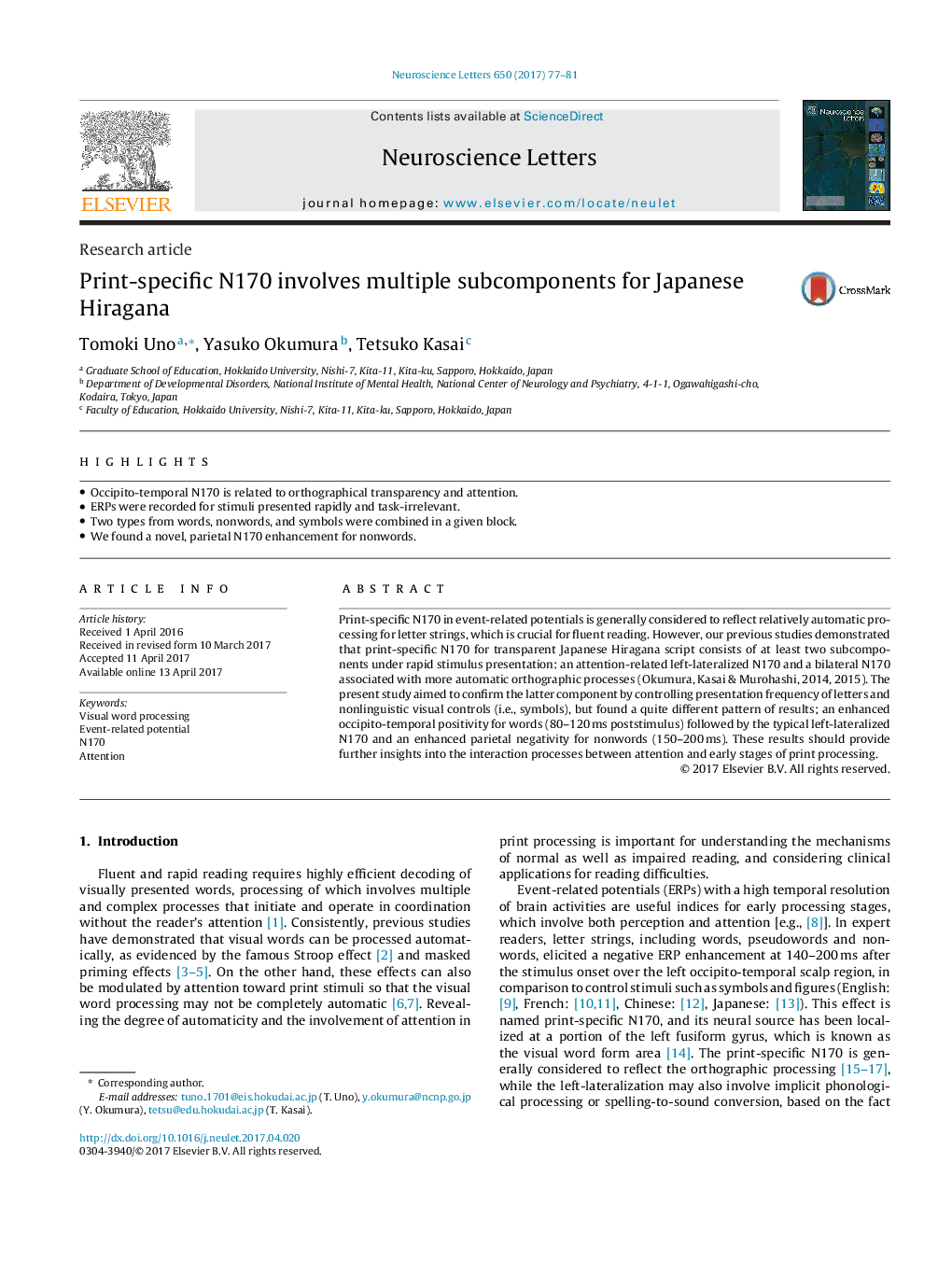| Article ID | Journal | Published Year | Pages | File Type |
|---|---|---|---|---|
| 5738346 | Neuroscience Letters | 2017 | 5 Pages |
Abstract
Print-specific N170 in event-related potentials is generally considered to reflect relatively automatic processing for letter strings, which is crucial for fluent reading. However, our previous studies demonstrated that print-specific N170 for transparent Japanese Hiragana script consists of at least two subcomponents under rapid stimulus presentation: an attention-related left-lateralized N170 and a bilateral N170 associated with more automatic orthographic processes (Okumura, Kasai & Murohashi, 2014, 2015). The present study aimed to confirm the latter component by controlling presentation frequency of letters and nonlinguistic visual controls (i.e., symbols), but found a quite different pattern of results; an enhanced occipito-temporal positivity for words (80-120Â ms poststimulus) followed by the typical left-lateralized N170 and an enhanced parietal negativity for nonwords (150-200Â ms). These results should provide further insights into the interaction processes between attention and early stages of print processing.
Related Topics
Life Sciences
Neuroscience
Neuroscience (General)
Authors
Tomoki Uno, Yasuko Okumura, Tetsuko Kasai,
